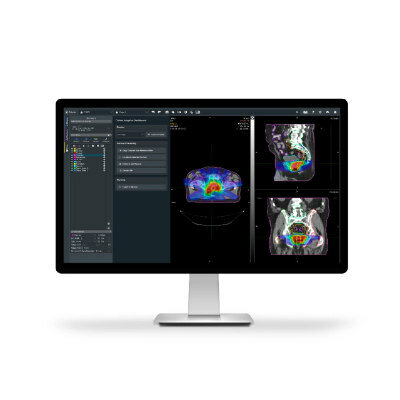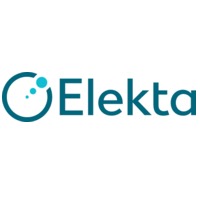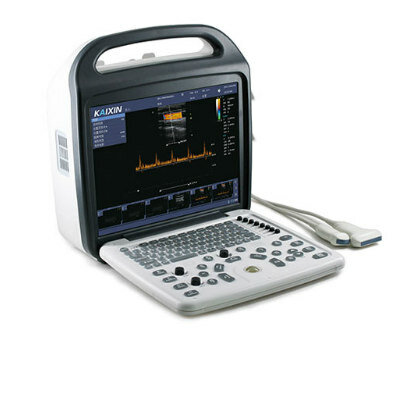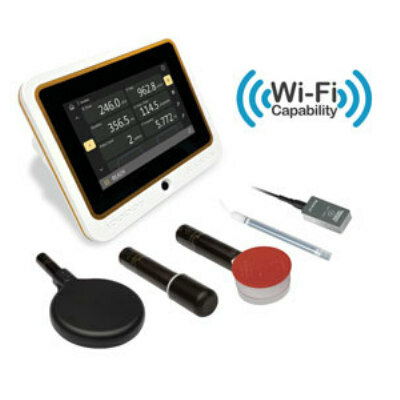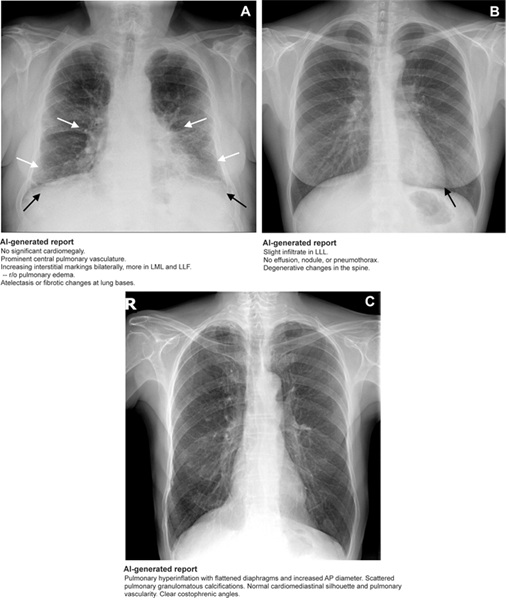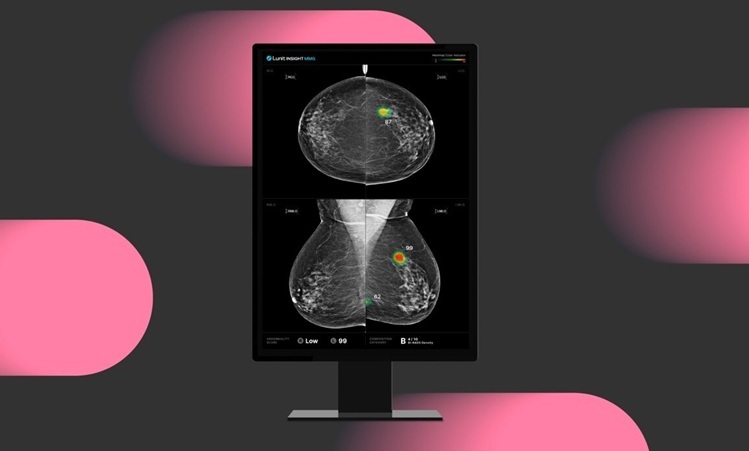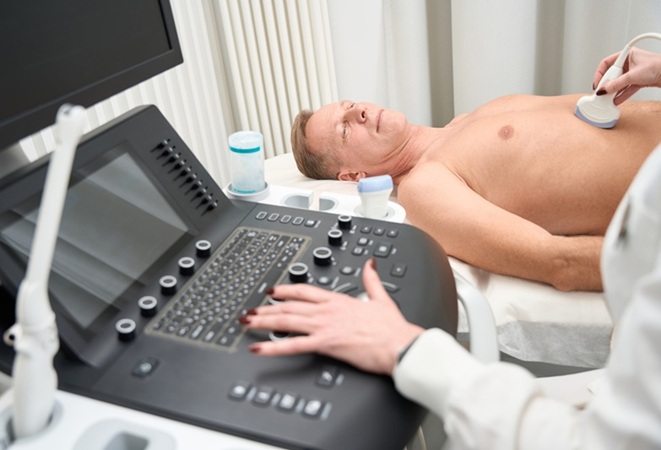Portable Imaging Device Assesses Tissue Oxygenation
|
By MedImaging International staff writers Posted on 26 Jan 2017 |
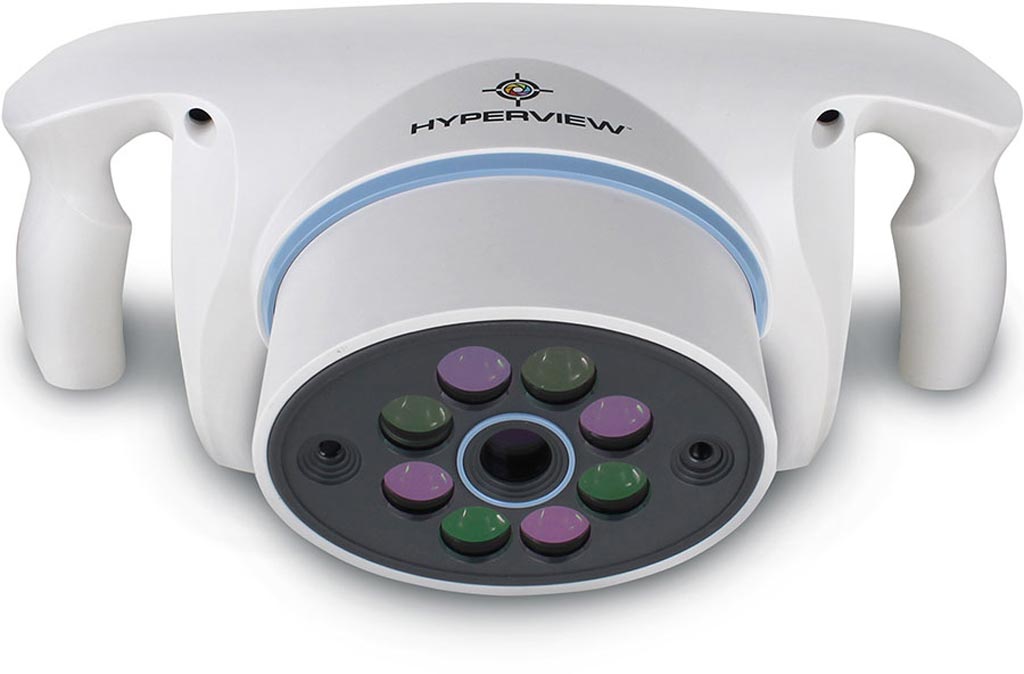
Image: The Hyperview hyperspectral tissue oxygenation device (Photo courtesy of HyperMed Imaging).
A handheld, battery operated diagnostic imaging device measures oxygen saturation (O2Sat) and other measures in superficial tissues for patients with potential circulatory compromise.
The HyperView is intended for use by healthcare professionals as a noninvasive tissue oxygenation measurement system that reports approximate values of O2Sat, oxyhemoglobin, and deoxyhemoglobin levels in superficial tissue, displaying the results as two-dimensional, color-coded images of the scanned surface. The images and data can thus provide hyperspectral tissue oxygenation measurements for the selected tissue regions in patients with compromised vascular systems, such as those who suffer from diabetes, peripheral vascular disease (PAD), and limb ischemia.
The patented technology uses proprietary hyperspectral imaging technology to differentiate light absorption patterns between oxygenated hemoglobin and deoxygenated hemoglobin. Software tools then allow the clinician to analyze various areas within the image corresponding to locations on the skin surface, thus determining the location of ischemic tissue. The HyperView is a product of HyperMed Imaging, and has been approved by the U.S. Food and Drug Administration (FDA).
“The new HyperView product represents a significant advancement in non-invasive assessment of superficial tissue oxygenation. We began years ago by first meeting with clinicians to understand their working environment and determine user requirements,” said Mark Darty, President and CEO of HyperMed. “The need for portability, ease of use, and speed of imaging required a full custom design for the HyperView product. Our team’s effort has long been energized by a belief that the HyperView product holds great potential to positively impact the lives of millions of patients.”
“The HyperView is a new and innovative product that can provide clinicians a better understanding of surface perfusion and localized oxygen delivery in patients with potential circulatory compromise, which is important for a number of applications including limb ischemia, wound healing, and reconstructive surgery,” said Professor Aristidis Veves, MD, of Harvard Medical School (Boston, MA, USA), chairman of HyperMed Imaging’s scientific advisory board.
The HyperView is intended for use by healthcare professionals as a noninvasive tissue oxygenation measurement system that reports approximate values of O2Sat, oxyhemoglobin, and deoxyhemoglobin levels in superficial tissue, displaying the results as two-dimensional, color-coded images of the scanned surface. The images and data can thus provide hyperspectral tissue oxygenation measurements for the selected tissue regions in patients with compromised vascular systems, such as those who suffer from diabetes, peripheral vascular disease (PAD), and limb ischemia.
The patented technology uses proprietary hyperspectral imaging technology to differentiate light absorption patterns between oxygenated hemoglobin and deoxygenated hemoglobin. Software tools then allow the clinician to analyze various areas within the image corresponding to locations on the skin surface, thus determining the location of ischemic tissue. The HyperView is a product of HyperMed Imaging, and has been approved by the U.S. Food and Drug Administration (FDA).
“The new HyperView product represents a significant advancement in non-invasive assessment of superficial tissue oxygenation. We began years ago by first meeting with clinicians to understand their working environment and determine user requirements,” said Mark Darty, President and CEO of HyperMed. “The need for portability, ease of use, and speed of imaging required a full custom design for the HyperView product. Our team’s effort has long been energized by a belief that the HyperView product holds great potential to positively impact the lives of millions of patients.”
“The HyperView is a new and innovative product that can provide clinicians a better understanding of surface perfusion and localized oxygen delivery in patients with potential circulatory compromise, which is important for a number of applications including limb ischemia, wound healing, and reconstructive surgery,” said Professor Aristidis Veves, MD, of Harvard Medical School (Boston, MA, USA), chairman of HyperMed Imaging’s scientific advisory board.
Latest General/Advanced Imaging News
- AI Model Significantly Enhances Low-Dose CT Capabilities
- Ultra-Low Dose CT Aids Pneumonia Diagnosis in Immunocompromised Patients
- AI Reduces CT Lung Cancer Screening Workload by Almost 80%
- Cutting-Edge Technology Combines Light and Sound for Real-Time Stroke Monitoring
- AI System Detects Subtle Changes in Series of Medical Images Over Time
- New CT Scan Technique to Improve Prognosis and Treatments for Head and Neck Cancers
- World’s First Mobile Whole-Body CT Scanner to Provide Diagnostics at POC
- Comprehensive CT Scans Could Identify Atherosclerosis Among Lung Cancer Patients
- AI Improves Detection of Colorectal Cancer on Routine Abdominopelvic CT Scans
- Super-Resolution Technology Enhances Clinical Bone Imaging to Predict Osteoporotic Fracture Risk
- AI-Powered Abdomen Map Enables Early Cancer Detection
- Deep Learning Model Detects Lung Tumors on CT
- AI Predicts Cardiovascular Risk from CT Scans
- Deep Learning Based Algorithms Improve Tumor Detection in PET/CT Scans
- New Technology Provides Coronary Artery Calcification Scoring on Ungated Chest CT Scans
- Deep Learning Model Accurately Diagnoses COPD Using Single Inhalation Lung CT Scan
Channels
Radiography
view channel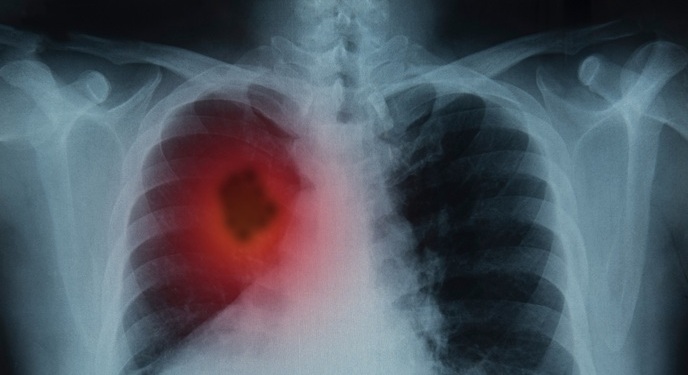
Higher Chest X-Ray Usage Catches Lung Cancer Earlier and Improves Survival
Lung cancer continues to be the leading cause of cancer-related deaths worldwide. While advanced technologies like CT scanners play a crucial role in detecting lung cancer, more accessible and affordable... Read more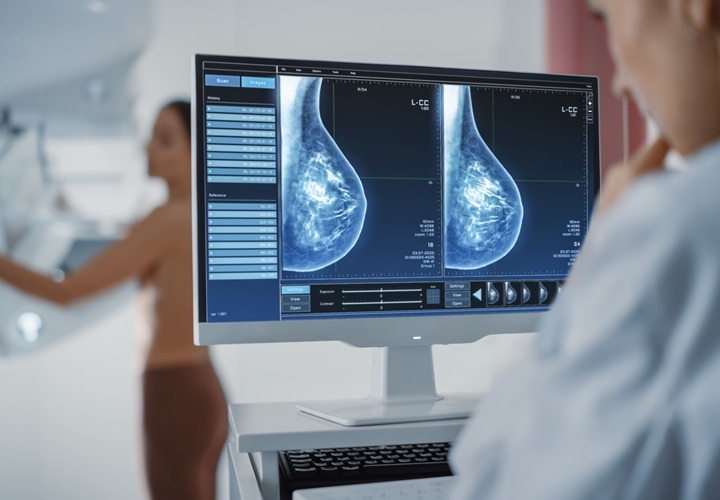
AI-Powered Mammograms Predict Cardiovascular Risk
The U.S. Centers for Disease Control and Prevention recommends that women in middle age and older undergo a mammogram, which is an X-ray of the breast, every one or two years to screen for breast cancer.... Read moreMRI
view channel
Ultra-Powerful MRI Scans Enable Life-Changing Surgery in Treatment-Resistant Epileptic Patients
Approximately 360,000 individuals in the UK suffer from focal epilepsy, a condition in which seizures spread from one part of the brain. Around a third of these patients experience persistent seizures... Read more
AI-Powered MRI Technology Improves Parkinson’s Diagnoses
Current research shows that the accuracy of diagnosing Parkinson’s disease typically ranges from 55% to 78% within the first five years of assessment. This is partly due to the similarities shared by Parkinson’s... Read more
Biparametric MRI Combined with AI Enhances Detection of Clinically Significant Prostate Cancer
Artificial intelligence (AI) technologies are transforming the way medical images are analyzed, offering unprecedented capabilities in quantitatively extracting features that go beyond traditional visual... Read more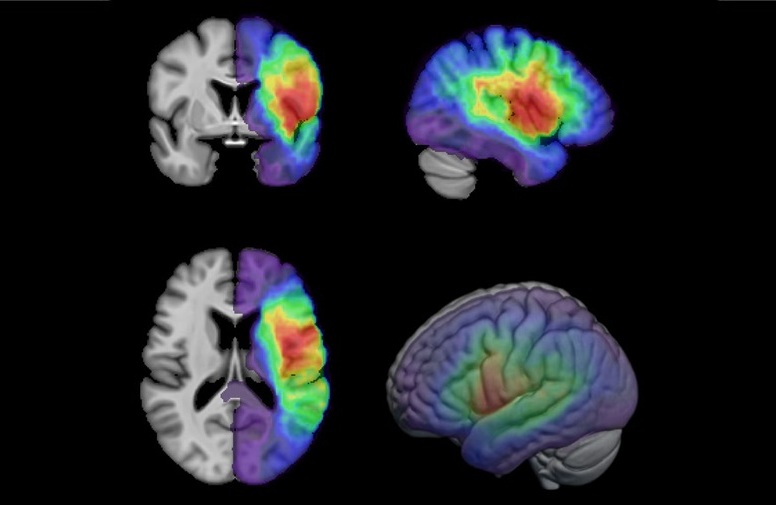
First-Of-Its-Kind AI-Driven Brain Imaging Platform to Better Guide Stroke Treatment Options
Each year, approximately 800,000 people in the U.S. experience strokes, with marginalized and minoritized groups being disproportionately affected. Strokes vary in terms of size and location within the... Read moreUltrasound
view channel
Tiny Magnetic Robot Takes 3D Scans from Deep Within Body
Colorectal cancer ranks as one of the leading causes of cancer-related mortality worldwide. However, when detected early, it is highly treatable. Now, a new minimally invasive technique could significantly... Read more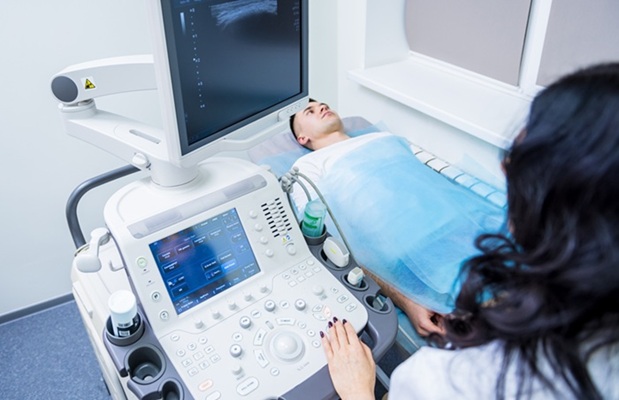
High Resolution Ultrasound Speeds Up Prostate Cancer Diagnosis
Each year, approximately one million prostate cancer biopsies are conducted across Europe, with similar numbers in the USA and around 100,000 in Canada. Most of these biopsies are performed using MRI images... Read more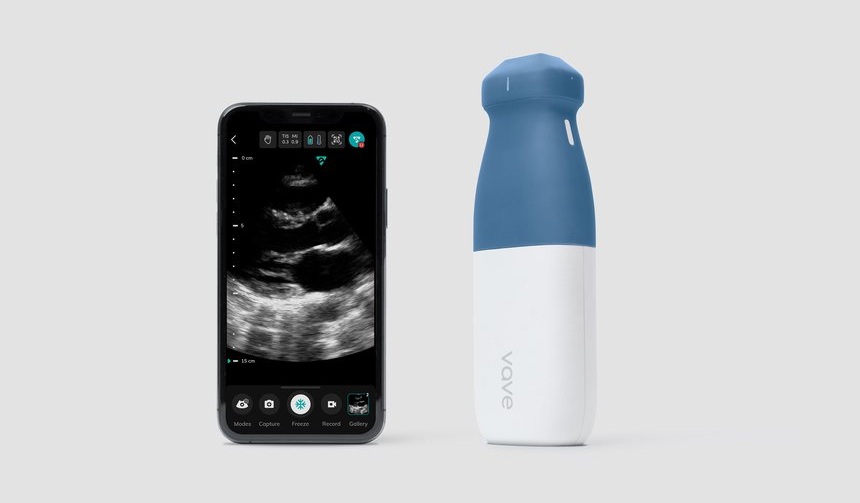
World's First Wireless, Handheld, Whole-Body Ultrasound with Single PZT Transducer Makes Imaging More Accessible
Ultrasound devices play a vital role in the medical field, routinely used to examine the body's internal tissues and structures. While advancements have steadily improved ultrasound image quality and processing... Read moreNuclear Medicine
view channel
Novel PET Imaging Approach Offers Never-Before-Seen View of Neuroinflammation
COX-2, an enzyme that plays a key role in brain inflammation, can be significantly upregulated by inflammatory stimuli and neuroexcitation. Researchers suggest that COX-2 density in the brain could serve... Read more
Novel Radiotracer Identifies Biomarker for Triple-Negative Breast Cancer
Triple-negative breast cancer (TNBC), which represents 15-20% of all breast cancer cases, is one of the most aggressive subtypes, with a five-year survival rate of about 40%. Due to its significant heterogeneity... Read moreImaging IT
view channel
New Google Cloud Medical Imaging Suite Makes Imaging Healthcare Data More Accessible
Medical imaging is a critical tool used to diagnose patients, and there are billions of medical images scanned globally each year. Imaging data accounts for about 90% of all healthcare data1 and, until... Read more
Global AI in Medical Diagnostics Market to Be Driven by Demand for Image Recognition in Radiology
The global artificial intelligence (AI) in medical diagnostics market is expanding with early disease detection being one of its key applications and image recognition becoming a compelling consumer proposition... Read moreIndustry News
view channel
GE HealthCare and NVIDIA Collaboration to Reimagine Diagnostic Imaging
GE HealthCare (Chicago, IL, USA) has entered into a collaboration with NVIDIA (Santa Clara, CA, USA), expanding the existing relationship between the two companies to focus on pioneering innovation in... Read more
Patient-Specific 3D-Printed Phantoms Transform CT Imaging
New research has highlighted how anatomically precise, patient-specific 3D-printed phantoms are proving to be scalable, cost-effective, and efficient tools in the development of new CT scan algorithms... Read more
Siemens and Sectra Collaborate on Enhancing Radiology Workflows
Siemens Healthineers (Forchheim, Germany) and Sectra (Linköping, Sweden) have entered into a collaboration aimed at enhancing radiologists' diagnostic capabilities and, in turn, improving patient care... Read more




